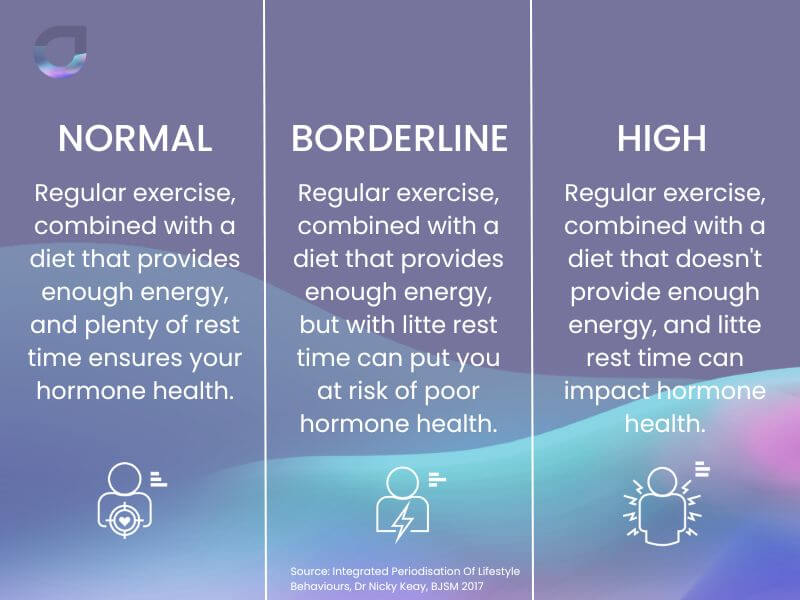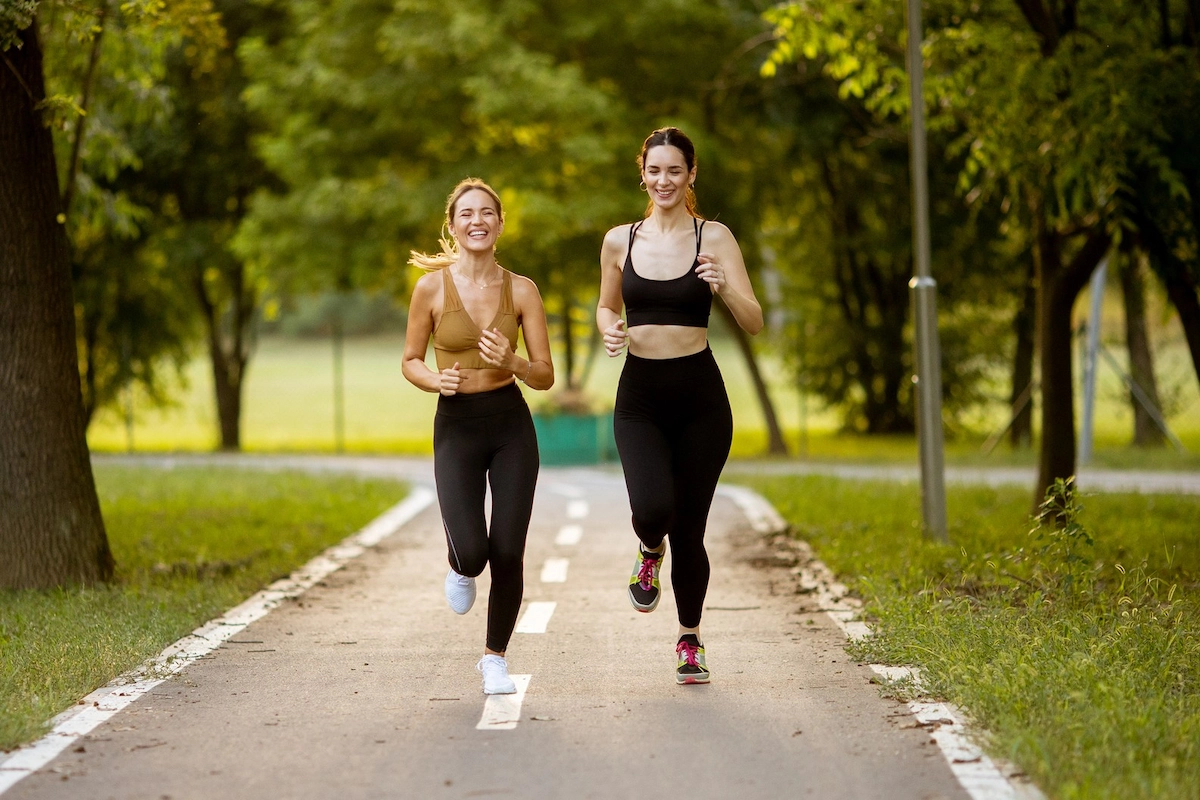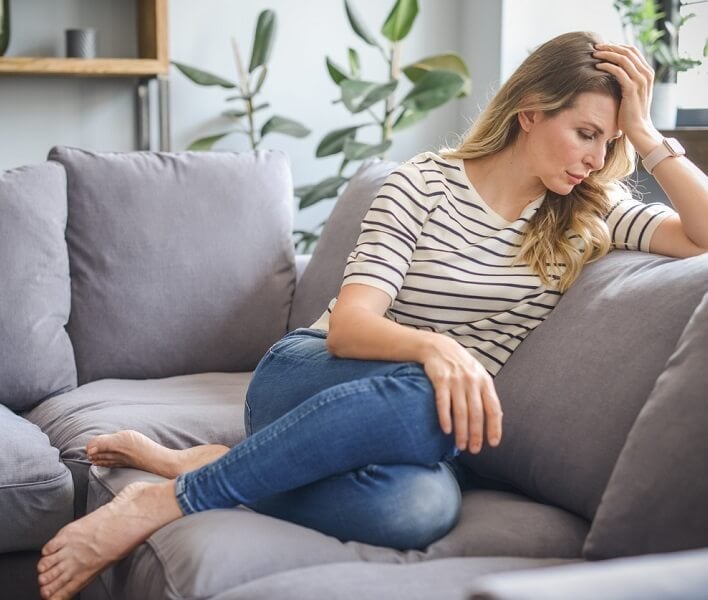5 mins read
What actually happens to your hormones when you exercise?

- Exercise is just one element within ‘The Hormone Triad’
- Exercise can have a positive impact on hormones
- Testosterone
- Cortisol
- Serotonin
- Adrenaline
- Human Growth Hormone (HGH)
- Glucagon and Insulin
We know that exercise has a positive impact on our physical and mental well-being. But what’s the science behind what actually happens to your hormones when you exercise? In this blog, we take a look at some of the key hormones impacted by exercise and how they affect the body.
Hormones are chemical messengers produced by the endocrine system. The endocrine system is the network of glands that release and regulate hormones in the bloodstream. There are up to 50 different kinds of hormones in the human body, all working together as a network of information to control different processes.
Exercise is just one element within ‘The Hormone Triad’
The hormone triad is a term used to refer to the 3 key elements needed for healthy hormone function. It includes:
- Exercise
- Nutrition
- Rest
If this triad becomes out of balance, it’ll negatively impact your hormone balance. For example, too much exercise without eating enough to fuel your body or resting properly can put your body under stress, slowing down hormone production.

Exercise can have a positive impact on hormones
Regular, moderate exercise is responsible for increased hormone production. When done in moderate amounts as part of a regular routine, exercise can have a positive impact on your hormones. This is because exercise is particularly powerful in activating the endocrine system. This activation pushes the endocrine system to boost the production of multiple hormones.
Exercise influences the entire hormone network. In this blog, we focus on the 8 key hormones impacted by exercise:
- Oestrogen
- Testosterone
- Cortisol
- Serotonin
- Dopamine
- Adrenaline
- Human Growth Hormone (HGH)
- Glucagon and Insulin
Oestrogen
Oestrogen levels are particularly sensitive to exercise and nutrition. The type and regularity of exercise you do will have a direct impact on oestrogen levels and your menstrual cycle.
Regular, gentle exercise supports the body’s detoxification process, preventing excess oestrogen. However, over-exercising in combination with under-eating can cause oestrogen deficiency.
This happens when you expend more energy than you fuel your body with. When overworked and malnourished, your body can go into a type of ‘survival mode’ whereby it stops all non-essential processes, including producing the sex hormones necessary for a regular menstrual cycle.
To avoid this happening, make sure you’re keeping your hormone triad in balance. This includes eating enough for the amount of energy your body is expelling – not just through exercise but during day-to-day activity. Getting enough rest is also key, giving your body time to recover and repair after exercise.
Testosterone
When you exercise regularly, testosterone production increases. This can be beneficial to women since testosterone is responsible for improving muscle growth and repair, libido and energy levels.
Cortisol
Cortisol is sometimes known as the ‘stress hormone’ because it rises in response to stress – helping you feel alert and energised. Cortisol levels are more likely to increase during long-term or endurance exercise such as running. However, over-exercising can cause spikes in cortisol that overpower other hormones – disrupting essential processes like the menstrual cycle.
Serotonin & Dopamine
When we exercise, levels of neurotransmitters in the brain such as serotonin and dopamine increase, giving your mood a positive boost.
Serotonin is the happy hormone. It’s responsible for keeping your mood uplifted and stable – as well as influencing your social behaviour, memory, appetite, and digestion. studies found that 90% of serotonin is produced in the gut, meaning diet also plays an important role alongside exercise.
Dopamine is responsible for sparking feelings of pleasure when you exercise, also known as ‘the runner’s high’. Regular exercise has been shown to boost dopamine production, decrease feelings of stress and improve mental well-being.
Adrenaline
Adrenaline plays a key role during exercise by constricting blood vessels and increasing blood pressure – allowing better blood flow around the body and providing muscles with more energy.
You may have heard of adrenaline as the fight-or-flight hormone. This is because adrenaline is responsible for increasing your heart rate and preparing you for physical exertion.
Human Growth Hormone (HGH)
Human Growth Hormone (HGH) plays a key role in muscle and bone growth. Regular exercise boosts HGH production – making exercise key to maintaining muscle and bone health.
Women going through menopause should prioritise regular exercise to boost HGH production – to counteract the decline in muscle mass and bone density due to lower oestrogen levels.
HGH is also responsible for regulating your metabolism and immune system. It’s released primarily during sleep, working to improve your sleep quality – meaning exercise is also beneficial for feeling well-rested.
Glucagon and Insulin
Exercise helps regulate your blood glucose levels by increasing glucagon production and suppressing insulin.
Glucagon and insulin work together to balance your blood sugar in different directions. Glucagon is the hormone responsible for increasing your blood sugar levels, whereas insulin regulates it.
When you exercise, your muscles demand more blood sugar for fuel – causing a drop in blood sugar levels. So, glucagon production is increased, whilst insulin levels are suppressed to ensure your blood sugar levels don’t drop too low.
How can I learn more about my hormones?
It’s important to remember that regular exercise is just one of three elements in the hormone triad, along with good nutrition and adequate rest.
If you want to learn more about your hormones and whether your exercise routine could be impacting your menstrual cycle – we recommend our MyFORM® hormone mapping test.
This information has been medically reviewed by Dr Thom Phillips
Thom works in NHS general practice and has a decade of experience working in both male and female elite sport. He has a background in exercise physiology and has published research into fatigue biomarkers.

Dr Thom Phillips
Head of Clinical Services
Related articles
Like this article? Here are some more based on similar topics.



